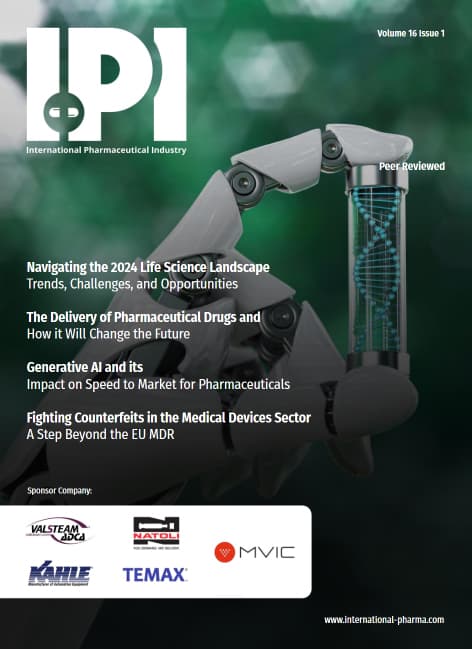Maidenhead, UK – 15 April 2019
Seqirus, a leading innovator in influenza protection, today announced its decision to manufacture its cell-based influenza vaccine (FLUCELVAX® TETRA) using cell-based Candidate Vaccine Viruses (CVVs) for all four strains recommended by the World Health Organization (WHO)1 each season, making the entire production process cell-based. The company will file data with the European Medicines Agency (EMA) to support this decision as part of the 2019/20 Annual Strain Update requirement.
CVVs are provided each season by the WHO Global Influenza Surveillance and Response System (GISRS) and associated laboratories. The manufacturing seeds produced from these CVVs are used to grow large quantities of virus, in either eggs or cells, enabling the mass production of influenza vaccine matched to the WHO-recommended strains.2
“Egg-based vaccines are the standard of care and continue to play a critical role in the fight against influenza, but it’s important to continuously evolve approaches to vaccine development,” said Gordon Naylor, President of Seqirus. “While we continue to manufacture and distribute egg-based vaccines globally, cell-based influenza vaccines represent a significant advancement in influenza protection. Seqirus is proud to continue to innovate this promising technology as part of our leading role on the front line of influenza prevention and pandemic preparedness.”
Seqirus, the world’s largest cell-based influenza vaccine manufacturer, produces FLUCELVAX TETRA at its Holly Springs facility in North Carolina. The Holly Springs facility was purpose-built in partnership with the U.S. Biomedical Advanced Research and Development Authority (BARDA) to help combat pandemic threats.4 When production first began in 2014, the site utilised egg-based CVVs in its cell-based manufacturing process.5,6 In 2016, the WHO began to recommend cell-based CVVs and the United States Food and Drug Administration issued an approval for Seqirus to use them in the production of cell-based influenza vaccines.7
In the US, Seqirus incorporated a cell-based H3N2 CVV in FLUCELVAX for the 2017/18 season and cell-based CVVs for both B strains in the 2018/19 season.8 The inclusion of a cell-based CVV for the remaining A strain in the 2019/20 season formulation will complete the transition to an exclusively cell-based product. This achievement complements other innovations that have enabled the manufacturing site to more than quadruple production in the last three years, as demand has increased in the U.S. and Seqirus prepares to launch the product in Europe in the upcoming season.9
“We’ve taken a stepwise approach to the introduction of this latest advancement to our cell-based technology, enabling us to continue to scale up manufacturing at Holly Springs. It will help us to fully realise the potential of our cell-based technology and enhance our ability to deliver on our commitment to public health,” said Naylor.
The introduction of cell-based CVVs into the global influenza system was the result of a multi-year collaboration involving the WHO Collaborating Centre for Surveillance, Epidemiology and Control of Influenza at the U.S. Centers for Disease Control and Prevention (CDC), the WHO Collaborating Centre for Reference and Research on Influenza in Melbourne, Australia, as well as scientists at Seqirus and its predecessor company.
“Major advances in influenza prevention require significant global collaboration between industry and public health agencies. We thank the many partners involved in advancing promising technologies and remain committed to our shared goal of reducing the number of lives lost to influenza each season,” said Naylor.
Product Information
FLUCELVAX® TETRA’s Summary of Product Characteristics (SmPC) can be accessed here: https://www.ema.europa.eu/en/documents/product-information/flucelvax-tetra-epar-product-information_en.pdf
About Seasonal Influenza
Seasonal influenza is a common, highly contagious infectious disease that can cause severe illness and life-threatening complications in many people. The European Centre for Disease Prevention and Control (ECDC) estimates that 15,000 – 70,000 people in Europe die from influenza-related complications each year, and encourages annual vaccination as the most effective way to prevent influenza. 10
###
Media Contact
Becky Roberts
+44 (0) 7960 718712
Becky.roberts@bairdscmc.com
About Seqirus
Seqirus is part of CSL Limited (ASX:CSL), headquartered in Melbourne, Australia. The CSL Group of companies employs more than 22,000 people with operations in more than 60 countries.
Seqirus was established on 31 July 2015 following CSL’s acquisition of the Novartis influenza vaccines business and its subsequent integration with bioCSL. As one of the largest influenza vaccine providers in the world, Seqirus is a major contributor to the prevention of influenza globally and a transcontinental partner in pandemic preparedness.
Seqirus operates state-of-the-art production facilities in the U.S., the UK and Australia and manufactures influenza vaccines using both egg-based and cell-based technologies. It has leading R&D capabilities, a broad portfolio of differentiated products and a commercial presence in more than 20 countries.
For more information visit www.seqirus.com and www.csl.com.
References
1 WHO. (2019). Addendum to the recommended composition of influenza virus vaccines for use in the 2019–2020 northern hemisphere influenza season. Retrieved from: https://www.who.int/influenza/vaccines/virus/recommendations/201902_recommendation_addendum.pdf?ua=1
Accessed March 2019.
2 Ambrozaitis A, et al. (2009). A novel mammalian cell-culture technique for consistent production of a well-tolerated and immunogenic trivalent subunit influenza vaccine. Vaccine. 2009;27:6022–6029. doi:10.1016/j.vaccine.2009.07.083.
3 Rajaram S., Van Boxmeer J., Leav B., et al. (2018). Retrospective evaluation of mismatch from egg-based isolation of influenza strains compared to cell-based isolation and the possible implications for vaccine effectiveness. Presented at IDWeek 2018, October 2018.
4 This project has been funded in whole or in part with Federal funds from the Office of the Assistant Secretary for Preparedness and Response, Biomedical Advanced Research and Development Authority, under contract numbers HHSO100200600012C, HHSO100200700030C, HHSO100200900101C and HHSO100201200003I.
5 WHO. (2016). Improving influenza vaccine virus selection, Report of the 4th WHO Informal Consultation Hong Kong. Retrieved from: http://www.who.int/influenza/resources/publications/Influenza_vaccine_virus_selection_report/en/. Accessed March 2019.
6 U.S. Department of Health & Human Services. Supplement Approval. (2016). Retrieved from: https://www.fda.gov/downloads/BiologicsBloodVaccines/Vaccines/ApprovedProducts/UCM522280.pdf. Accessed March 2019.
7 WHO. (2017). Recommended composition of influenza virus vaccines for use in the 2017-2018 northern hemisphere influenza season. Retrieved from: http://www.who.int/influenza/vaccines/virus/recommendations/201703_recommendation.pdf?ua=1. Accessed March 2019.
8 CDC. (2018). Advisory Committee on Immunization Practices (ACIP) Presentation Slides: June 2018 Meeting. Retrieved from: https://www.cdc.gov/vaccines/acip/meetings/slides-2018-06.html. Accessed March 2019.
9 Seqirus USA Inc. Data on file.
10 ECDC. (2019). Factsheet about seasonal influenza. Retrieved from: https://ecdc.europa.eu/en/seasonal-influenza/facts/factsheet. Accessed March 2019.

























